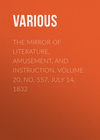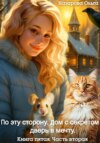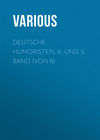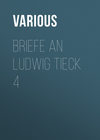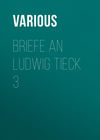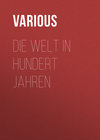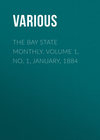Buch lesen: «The Mirror of Literature, Amusement, and Instruction. Volume 20, No. 557, July 14, 1832»

BIRTHPLACE OF BEWICK, THE ENGRAVER
The above cottage stands in the village of Cherryburn, near Ovingham, on the banks of the Tyne, about twelve miles west of Newcastle.
In this humble dwelling, hitherto of "unlettered fame," was born, August 12, 1753, THOMAS BEWICK, the celebrated artist and engraver on wood; or more strictly speaking, the reviver of this branch of art. His whole life was one of untiring industry and ardent attachment to the object of his study—the only sure passport to success—which it is truly delightful to contemplate: from the first dawnings of his early genius to the enthusiasm that led him to examine proofs of wood-engravings on the morning of his death. His life is exemplary, inasmuch as it illustrates the homely maxim, that every man is the architect of his own fortune. Apart from this consideration, the memory of Bewick should be cherished by all our readers; since he re-invented the ingenious means by which we are enabled to embellish unsparingly each of our weekly sheets. 1
Of Bewick's genius, and personal habits, many interesting particulars have been preserved. From his earliest years he delighted, above all things, in observing the habits of animals; and it was his fondness for this study that gave rise, while he was yet a boy, to his first attempts in drawing. Long before he had received instruction in that art, he used to delineate his favourites of the lower creation with great accuracy and spirit. His introduction to the regular study of his future profession was purely accidental. He was in the habit of exercising his genius by covering the walls and doors of the houses in his native village with his sketches in chalk. Some of these performances one day chanced to attract the attention of a Mr. Beilby, a copper-plate engraver of Newcastle, as he was passing through Cherryburn; and he was so much struck with the talent they displayed that he sought out the young artist, and obtained his father's consent to take him with him to be his apprentice. This was in the year 1767. In the following year Bewick executed his first wood-cut for Dr. Button's Treatise on Navigation, the diagrams for which work were, at the suggestion of Mr. Beilby, engraved on wood, and printed with the letter-press, instead of being on copper and stitched in with the sheets. Bewick executed the whole of the cuts for Dr. Button's work with so much accuracy, and a finish so greatly beyond what had usually been attained in that species of work, that Mr. Beilby advised him to give his chief attention henceforward to wood-engraving, and make it his profession. He did so during the remainder of his apprenticeship, at the expiration of which he repaired to London, and obtained employment in his trade. He soon returned to the country, and in 1777 he entered into partnership with his former master, Mr. Beilby. Bewick with his taste for rural scenery and enjoyments and the observation of nature, doubtless found little to interest him in London; nor even after he had obtained his highest celebrity, did he ever again think of establishing himself in the metropolis. He spent the remainder of his life in his native district.
At the time of Bewick's first entering into active life, the art of wood-engraving had fallen into the lowest repute. Few of its specimens were superior to the pictures on street ballads of the present day. To explain Bewick's improvements would occupy too much of our space, but, we may observe, generally that the engravings of the above period were mere patches of black and white, till Bewick introduced those beautiful reliefs, or varieties of light and shade which principally form the pictorial effect of an engraving. By this means he raised wood-engraving from a state of contempt to the rank of one of the fine arts.
The first specimen of his talents by which Bewick made himself publicly known was a cut of an old hound, for which, in 1755, he received a premium from the Society of Arts. The block had been cut for an edition of Gay's fables; the complete work appeared in 1779; and immediately attracted general attention by the striking superiority of its embellishments, which were all from wood-cuts executed by Bewick and his younger brother John, who, when Beilby and he entered into partnership, had become their apprentice. From this time the reputation of the artist went on increasing steadily, and he produced a succession of works which very soon gave altogether a new character to his art itself.
Bewick's principal work, or that which established his fame, was his History of Quadrupeds, which appeared in 1790. He had been employed many years in preparing this publication, all the cuts in which were not only engraved by himself or his brother, but were all copied from his own drawings. He had cultivated his early talent for the delineation of animals with unwearied industry: he had not the advantages of academical studies, which education in the metropolis might have afforded him, but he drew from life, taking sketches of all the striking specimens that came under his notice, and visiting whatever menageries of exotic animals were brought to Newcastle. 2 Thus he studied assiduously from nature, and to this course may be attributed the excellence of the cuts in the History of Quadrupeds. Many of the vignettes also, with which this publication was adorned, had uncommon merit as original sketches; for Bewick did not confine his pencil to the mere delineation of animals. His vignettes have been said to partake of his determinate propensity to morality, tenderness, and humour; each telling articulately its own tale. 3 and bearing in every line a lesson.
A catalogue of Bewick's various works will not be expected in this brief sketch. He did not confine himself to animal engraving; for in the years 1795 and 1796, were published by Mr. Bulmer, of Newcastle, the Traveller and the Deserted Village, by Goldsmith; Parnell's Hermit; and Somerville's Clara; with cuts by Bewick. In 1797, appeared the first volume of his History of British Birds: in 1818, he completed his first volume of Fables of Aesop and others. In 1820, Mr. Charnley, of Newcastle, published a volume of Fables, as a vehicle for the impressions of the earlier blocks, both of head-pieces and vignettes, engraved by Bewick when very young, all previous to the year 1785, and for various publications. This collection amounted to upwards of twelve hundred. 4 This volume contains an impression of the celebrated Old Hound, and five portraits, on wood, copies at different periods of Bewick's portrait; that facing the title, from a painting of James Ramsay, is considered the nearest likeness.
It may now be interesting to note a few traits of the genius and personal habits of Bewick, as they have been sketched by his friend, Mr. Dovaston. This gentleman observes:
"It has been said that Linnaeus did more in a given time than ever did any one man. If the surprising number of blocks of every description, for his own and others' works, cut by Bewick, be considered, though perhaps he may not rival our beloved naturalist, he may be counted among the indefatigably industrious. And amid all this he found ample time for reading and conviviality. I have seen him picking, chipping, and finishing a block, talking, whistling, and sometimes singing, while his friends have been drinking wine at his profusely hospitable table. At nights, after a hard day's work, he generally relieved his powerful mind in the bosom of his very amiable family."
"It has been supposed by many, and publicly asserted by a few, that Bewick never wrote his own works, but was wholly and solely employed on the designs; to this I have his positive contradiction, which would be enough; but that in addition to his own Memoir, which I have read in his own MS., I have seen him compose, extract, and translate passages for each bird he has engraved while I was in his house. If his works have any great defect, 'tis the defect of omission; every one laments he has given so little of the history of each bird. I have often offered him to rewrite the whole of the birds wherewith from early and lasting habits I was well acquainted, their characters and manners, interspersed with anecdotes and poetry, particularly from good old Chaucer, the bard of birds, and passages of every bearing brought together, flinging over the whole what may be called the poetic bloom of nature, in which none have so sweetly succeeded as honest White of Selborne. But this he always resolutely refused; alleging that his descriptions, whether original, copied, or compared, were unimpeachably accurate; and that was enough. And not only did he write his own language, but I often thought his talent in that department not surpassed even by the other effusions of his genius; witness his unparalleled Preface to his Fables, and his other Introductions. He said, even to the last, he felt no deficiency of his imaginative powers, in throwing-off subjects for his tail-pieces (as I named them), which were always his favourite exercise; the bird or figure he did as a task, but was relieved by working the scenery and back-ground; and after each figure he flew to the tail-piece with avidity, for in the inventive faculty his imagination revelled."
Mr. Dovaston visited Bewick, at Buxton, in 1827. Here he relates
"There were three windows in the front room, the ledges and shutters whereof he had pencilled all over with funny characters, as he saw them pass to and fro, visiting the well. These people were the source of great amusement: the probable histories of whom, and how they came by their ailings, he would humorously narrate, and sketch their figures and features in one instant of time. I have seen him draw a striking likeness on his thumb-nail in one moment; wipe it off with his tongue, and instantly draw another. We dined occasionally at the public table; and one day, over the wine, a dispute arose between two gentlemen about a bird; but was soon terminated by the one affirming he had compared it with the figure and description of Bewick, to which the other replied that Bewick was next to Nature. Here the old gentleman seized me by the thigh with his very hand-vice of a grasp; and I contrived to keep up the shuttlecock of conversation playfully to his highest satisfaction, though they who praised him so ardently, little imagined whose ears imbibed all their honest incense."
Bewick's observations on the Dove would alone prove him to have been a close observer of nature:
"He said, of all birds he thought the dove tribe most beautiful. Their outline presents every possible variety of the line of beauty; their colours are brilliant and varied; their notes amorous and soothing; their manners gentle and affectionate; their flight both rapid and graceful; and, in all times and nations, they have been emblems of peace, love, and fidelity. They have moreover, many qualities and habits exclusively peculiar to their tribe; they drink differently (by immersion), and have no gall." The "peace, fidelity, and love" of the Dove have, however, been much questioned by naturalists.
Every one will admire the simplicity of mind and heart in the following opinions of Bewick, in his chat with Mr. Dovaston. Paradise, he said, was of every man's own making; all evil caused by the abuse of free-will; happiness equally distributed, and in every one's reach. "Oh!" said he, "this is a bonny world as God made it; but man makes a packhorse of Providence." He held that innumerable things might be converted to our use that we ignorantly neglect, and quoted with great ardour, the whole of Friar Lawrence's speech in Romeo and Juliet to that effect. Again, Mr. Dovaston says, "Every body loved Bewick; all animals love him; and frequently of mornings I found him in the inn-yard, among the dogs, ducks, or pigs, throwing them pieces of biscuit, and talking to them, or to the boors, beside them, waiters, chay-boys, or boots." "Frequently," observes Mr. D., "as I walked with him along the streets of Newcastle, it was gratifying to witness how much and how generally his character and talents were respected." Of all esteem there is none more gratifying than that shown to a good man in his native place.
Bewick's powers of whistling appear to have been extraordinary. "His ear," says the agreeable reminiscent already quoted, "(as a musical feeling is called) was so delicately acute, and his inflexorical powers so nice and rapid, that he could run in any direction or modulation, the diatomic or chromatic scale, and even split the quarter-notes of the enharmonic; neither of which, however, did he understand scientifically, though so consummately elegant his execution: and his musical memory was so tenacious that he could whistle through the melodies of whole overtures; and these, he said, he could obtain having once heard from the orchestra of a playhouse, or a holiday band, in both of which he took extreme delight." Bewick's contempt for luxury was remarkable. He generally slept, even in the depth of winter, with the windows of his chamber open, though in consequence he sometimes, on awakening, found the snow lying on his bed-clothes. For money, which men in general prize so highly, Bewick had all the indifference of a philosopher.
But we must let Mr. Dovaston tell Bewick's last labours, and the close of his well-spent life:
"Having exhausted the quadrupeds and British birds as vehicles to his art, instruction, and amusements, he, late in life, took up a fervent resolution to engrave all the British Fishes, and write their histories. To this his mind was well trained, having been ever a lover of the fountains and rills, the still pools and broad waters, the majestic rivers and the mighty ocean. Here he felt the seeds of his talent stirring all a-life, where he should have to display the beauties of the finny tribe, and treat of the wonders of the great deep. When I was last in Northumberland, they showed me thirty fishes he had cut by way of trial, with the spirit and execution whereof himself was well satisfied, and his judicious friends enraptured; together with more than a hundred tail-pieces, conceived and cut, 'ay, every inch,' with all his usual imaginative appropriation and power. His art here got entirely into a new element; for, as he was forced to show the fishes out of water, he was deprived of his favourite excellence, motion; yet such motion as a fish new-landed has, he has given with elasticity and life: brilliance to the scaly, and lubricity to the smooth; so as to remind the naturalist of excellent old Chaucer's touches of nature, where
